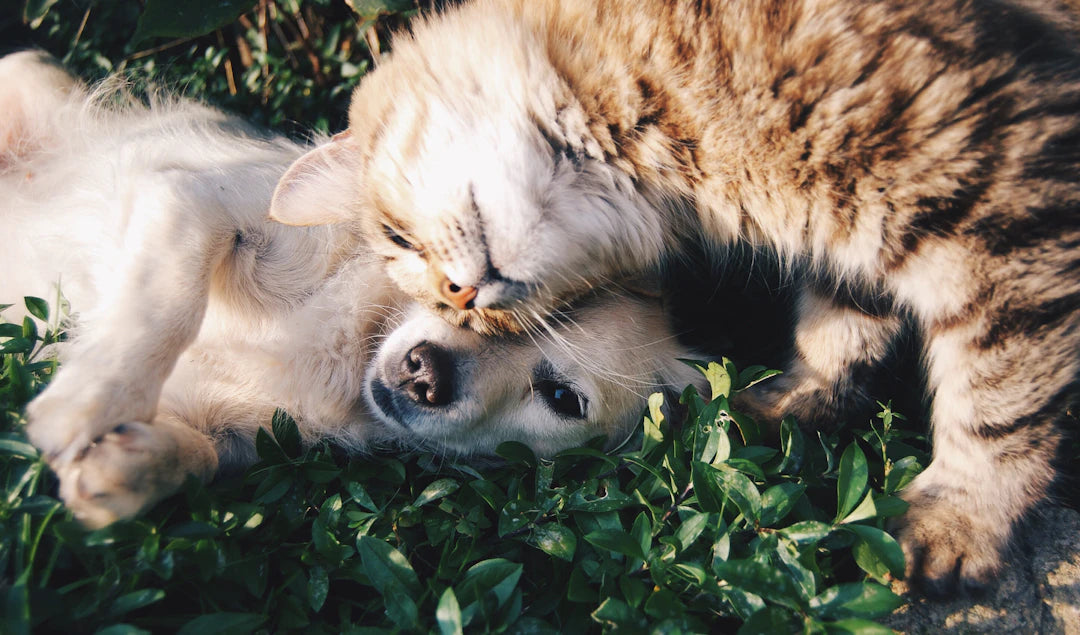
Save for Pets: How to Set Up a Pet Savings Fund
Share
Frequently Asked Questions
1. What is a pet savings fund?
2. Why is it important to have a pet savings fund?
3. How do I set up a pet savings fund?
4. What are some strategies to build my pet savings fund?
5. What should I do if an unexpected expense arises for my pet?
If you're a pet owner, you know that having a furry friend comes with numerous responsibilities and costs. From routine vet visits to unexpected emergencies, ensuring you have enough money set aside can make a significant difference in your peace of mind. Establishing a pet savings fund is a prudent step for any dog parent. This guide will walk you through the steps to effectively set up and manage a pet savings fund while incorporating some delightful elements like the Peace Love Paws Mug for those cozy evenings at home.
Understanding the Importance of a Pet Savings Fund
Your pet is a part of your family, and just like any other family member, they may need financial support. A pet savings fund can help you cover expenses without the stress of financial strain. Emergencies can arise at any time, whether it’s an unexpected illness or an accident. Here are a few reasons why creating a pet savings fund is essential:
- Emergency Preparedness: Having a financial buffer can help you quickly respond to vet emergencies when they occur.
- Routine Expenses Covered: Regular care, including vaccinations and check-ups, is vital for your pet's health.
- Peace of Mind: Knowing that you have funds set aside allows you to focus on the joy your pet brings instead of worrying about finances.
Setting Up Your Pet Savings Fund
Now that you understand the importance of having a pet savings fund, let’s dive into how to set one up. The process doesn’t have to be overwhelming. Follow these simple steps to create a robust savings plan tailored for your canine companion.
1. Determine Your Pet’s Needs
Start by assessing your pet’s health and specific needs. Ask yourself the following questions:
- What routine vet visits are necessary each year?
- Are there any expected costs due to age or breed predispositions?
- What emergencies have I faced in the past?
By considering your dog's specific needs, you can estimate a target amount to save. The better informed you are about your dog’s potential expenses, the more prepared you'll be.
2. Set a Savings Goal
Your next step is to establish a savings goal. Given the costs you've identified, here’s how to create a realistic budget:
- Calculate yearly vet costs, food, and other necessities.
- Factor in an emergency fund, ideally between $1,000 and $5,000, depending on your situation.
- Choose a timeline for reaching your goal and figure out how much you need to save each month.
This financial target will motivate you to keep saving and ensure you have adequate funds at your disposal when required.
3. Create a Separate Savings Account
Let’s face it; it’s too easy to dip into your savings for other expenses. Consider opening a dedicated savings account for your pet. Here’s why:
- Accessibility: While you want it to be separate from your regular spending, make sure it’s easy to access when necessary.
- Interest Accumulation: Some accounts offer interest on savings, which can enhance your fund over time.
Keep this separate account strictly for your pet savings, and be disciplined about not using it for anything else.
Building Your Pet Savings Fund
Starting to add money to your pet savings fund is crucial, but how can you maximize your savings? Here are some strategies to help you build your fund over time:
1. Automate Your Savings
One of the easiest ways to save is through automation. Set up automatic transfers from your checking account to your pet savings account. Doing this will:
- Eliminate the temptation to spend the money.
- Ensure consistent contributions to the fund.
Even small amounts add up quickly when automated, and soon enough, you’ll watch your savings grow.
2. Cut Costs in Other Areas
Consider finding ways to save in other areas of your life to bolster your pet savings fund. Here are some ideas:
- Evaluate your pet spending and look for areas to reduce costs, such as buying in bulk or opting for generic brands.
- Take a look at your own lifestyle spending—could you cut back on dining out or subscriptions for a month?
The savings can then be redirected into your pet fund, making a difference in your overall financial goals.
3. Use Pet-Related Discounts and Rewards
Many retailers offer loyalty programs or discounts for pet goods and services. Subscribing to these programs can help you save money on everyday purchases, which you can then invest back into your pet fund. Look for:
- Discount coupons for food, grooming, and other services.
- Cashback offers through credit cards when purchasing pet supplies.
By combining these savings, you can increase your pet fund without feeling the pinch in your budget.
What to Do When an Expense Arises
Now that you’ve built up your pet savings fund, it’s necessary to know how to use it wisely when expenses arise. Your preparation should focus on a few key actions to ensure you're making the most of your savings:
1. Prioritize Healthcare Expenses
Healthcare should always come first. When faced with a sudden vet bill:
- Assess whether the situation warrants an immediate visit; consider your pet’s condition and urgency.
- Consult your pet insurance if you have one and understand their policies on covering certain expenses.
2. Avoid Impulsive Decisions
As a dog owner, it can be tempting to splurge on themed merchandise like the Peace Love Paws Mug during special occasions or in response to certain situations. However, it's essential to remain focused on your pet's needs without making impulsive purchases that could deplete your savings.
Pitfalls to Avoid
Your journey to creating a robust pet savings fund might have hurdles along the way. Here are some common pitfalls to avoid:
- Neglecting Regular Contributions: Commit to monthly savings, and don't skip months unless absolutely necessary.
- Mixing Funds: Always keep your pet funds separate from household finances to avoid spending it on non-pet-related expenses.
Where to Go from Here: Your Pet’s Future Awaits
Establishing a pet savings fund is a proactive step that demonstrates your commitment to your dog's health and well-being. Not only does it create financial safety, but it also allows you to enjoy the joys of pet ownership without constant worry. By following this guide, you can lay down a solid foundation for future expenses, emergencies, and even fun experiences with your furry companion. Remember, as you sip your favorite beverage from your Peace Love Paws Mug, you can smile knowing that you're prepared for whatever comes next! Take control, plan wisely, and keep loving those paws!

